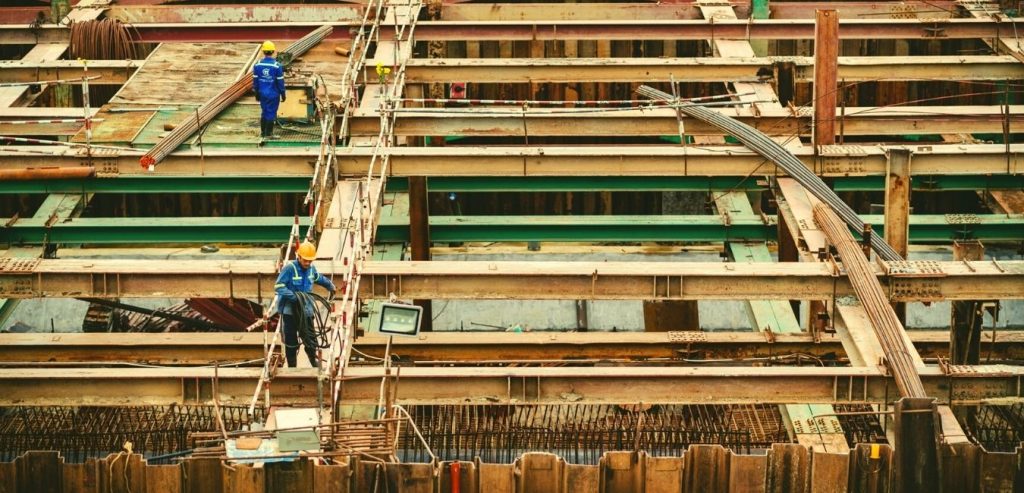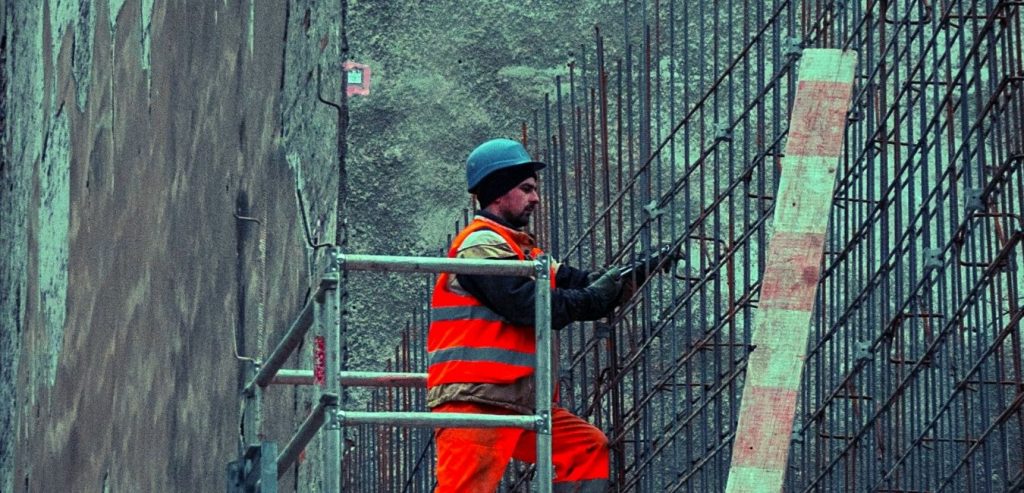Supports are one of the most critical aspects of a structure. They provide stability and strength in a structure. They also facilitate the load transfer from different structural members to the ground. Engineers should therefore have adequate knowledge of the supports and connections within a building.
The supports in a structure affect the structural soundness and load-bearing capacity of the members. Structural members span either vertically or horizontally, and depending on the structural member; we build corresponding supports for load transfer.
This article will discuss the different types of supports, their application, advantages, and disadvantages.
Table of Contents
What is structural support?
Structural support refers to the part of a structural member that provides the strength and necessary stiffness needed to resist applied forces and safely transfer them to the ground. The external loads applied on the supports lead to the build-up of internal resisting forces. Supports are either located at the end or along with intermediate points in a structure. Choosing the wrong supports for your system can compromise its structural integrity. Different supports have different fields of application.
Types of Supports
We majorly classified supports into internal and external supports. They can either be bolted or welded supports. In precast concrete or prefabricated steel, we can mechanically connect the supports differently, but they usually form monolithic structures in cast-in-situ systems. No matter the connection type of a material, it should have a specific rigidity.
External supports
External supports are the supports provided in a structure without affecting the structural elements. There are different kinds of structural supports, namely: -
- Roller support
- Pinned or hinged support
- Fixed support
- Hanger support
- Simple support
Roller Supports
Roller supports can only resist perpendicular forces but are free to move laterally. They allow for movement along surfaces without resistance to horizontal forces.
These supports resist heavy vertical loads but allow for horizontal movement. Horizontal movement is essential, especially during expansion and contraction, as the structural member can move freely. They prevent damage from occurring to a pinned support.
Roller supports can be in the form of rubber bearings or gears. For instance, consider a load on roller skates. The weight remains in place if there is no horizontal force. However, once a horizontal force is applied, the body starts moving. Roller supports are advantageous, especially in bridge construction. We generally place roller supports at the end of bridge spans in the form of bearing pads. Roller supports are also used in frame cranes and allow for right or left movement.
The disadvantage of roller supports is that they cannot resist horizontal forces, and there is a need for other types of supports to resist these forces in a structure.

Pinned Supports
Pinned supports are also referred to as hinged supports. It is the most common type of support in civil engineering. A pinned support does not allow movement either vertically or horizontally but allows for rotation. In most cases, a pinned support only allows for twisting in one direction. A good example is a human knee. It provides for turning in one direction but resists lateral movements. It is rare to find ideal pinned supports in practice. However, simply supported beams are typically regarded as pinned. The support conditions affect the distribution of moments in the beam. We also use pinned supports in trusses and three-hinged arched bridges.
The advantage of pinned supports is that it makes it easy to join multiple members together. The joining induces an axial force, and since the supports do not resist any moments, the design is limited to the axial force.
The only limitation of pinned supports is that a single pinned support cannot completely restrain a structure. One needs at least two pinned supports for restraint.
Fixed Supports
Fixed supports are the most rigid types of supports that constrain structural members from any movements. The structural member cannot rotate or translate in any direction. A perfect example of a fixed support is a flagpole with a concrete base; the pole cannot move or rotate in any direction. Generally, for the stability of a structure, the structure should at least have one fixed support. This support offers more excellent structural stability than any other kind of support.
Fixed supports are advantageous in situations where you can only use one support, such as cantilever beams. They ensure a structure is adequately constrained and static.
Sometimes, the most significant advantage also serves as the greatest disadvantage. A structure might need some wiggle room, but fixed supports do not allow it. As concrete gains strength, it also expands. Therefore, an improperly designed support may reduce durability in the structural members brought about by the increase in stresses.
Simple Supports
Simple supports are when structural members rest on other members. Simple supports are like roller supports whereby the members can resist vertical forces, but they cannot restrain horizontal forces. An excellent example of such a support is a plank of wood resting on two blocks of stone. The plank can resist the vertical load but cannot resist the corresponding horizontal forces. If you apply a shear force, the plank will support it, but a horizontal force will quickly get the plank to slide off the support. Simple supports are rarely used in engineering as they pose a considerable safety risk. Engineers sometimes use these supports are in areas that experience frequent seismic activities.
Hanger Supports
This is a support designed to transfer a load from a cable or pipe to a supporting structure. The support prevents movement in the direction of the hanger. An excellent example of a hanger support is a cable-stayed bridge. These supports are used to anchor, guide, and support a specified load. We also use them in areas with high-temperature variations.
Rocker Supports
Rocker supports are a type of roller supports. It resists vertical forces but allows for horizontal movement. The movement, however, is due to a curved support bottom. Horizontal movement is present but is limited, unlike the case of roller supports.
Link Support
Link supports are characterized by two hinges, one at each end. The support allows for rotation and translation in the direction perpendicular to the length of the link. It, however, does not allow translation in the direction of the link. The resultant force is then resolved into horizontal and vertical forces.
Spring Supports
These supports are adopted when a structural member has some vertical movement that is not conducive for solid support. Sometimes vertical displacement occurs in members such as high-pressure pipes. The lift-off causes enormous pressure in the pipes that needs control. There are two types of spring supports, namely variable and constant spring supports.
Both these supports are pre-compressed to exert an upward force on a member. The counterforce exerted on the spring depends on loading on the member.
Engineers do not put spring supports at conventional locations. Engineers place them in areas where they serve specific purposes. In hot conditions, a lot of expansion occurs, leading to deflections which are counteracted by spring supports. Spring supports are also used in members when little or no deflection is allowed.

Internal Supports
Internal supports are within the member, and they divide a structural member into parts. We resolve internal forces for each part of the structural member making analysis more straightforward. We classify internal supports are into internal hinges and internal rollers.
Internal hinges
Internal hinges resist horizontal and vertical movements, but they allow for rotation. In axial members, inner hinges are provided, but for axial members, middle hinges are provided. We majorly use these hinges in arch bridges in the middle of the arch. The resultant bending moments at a hinge usually are zero. Therefore, the structure can move to reduce the resulting forces brought about by the reactive stresses. Hinges also solve problems brought about in structural members by settlement or temperature differences.
Internal rollers
The internal rollers are similar to roller supports, but they are provided in the middle of a structural member. Tower cranes use internal rollers in the middle of the crane to support heavy materials between members and transport loads from one place to another.
FAQs
Below are some of the answers to the frequently asked questions concerning structural support systems.
Are walls fixed supports?
When a beam cuts through a wall, it is restrained against rotation and translation. The wall, therefore, acts as a fixed support.
Where do we mainly use fixed supports?
Fixed supports are beneficial when we only need one support on a structure, such as in a cantilever beam. We also use them in moment resisting frames and in slab-beam connections.
Which is the weakest kind of support?
The weakest kind of support is simple support, as it provides no restraint for a structure.
Summary
Stability problems in a structure are chiefly due to issues in the supports and connections in a structure. The design of a building should therefore incorporate the structural shell and the building services, finishes, supports, and connections and make a modular structure. The builder should also strike a balance between structural efficiency and the economic impact on support choice.

